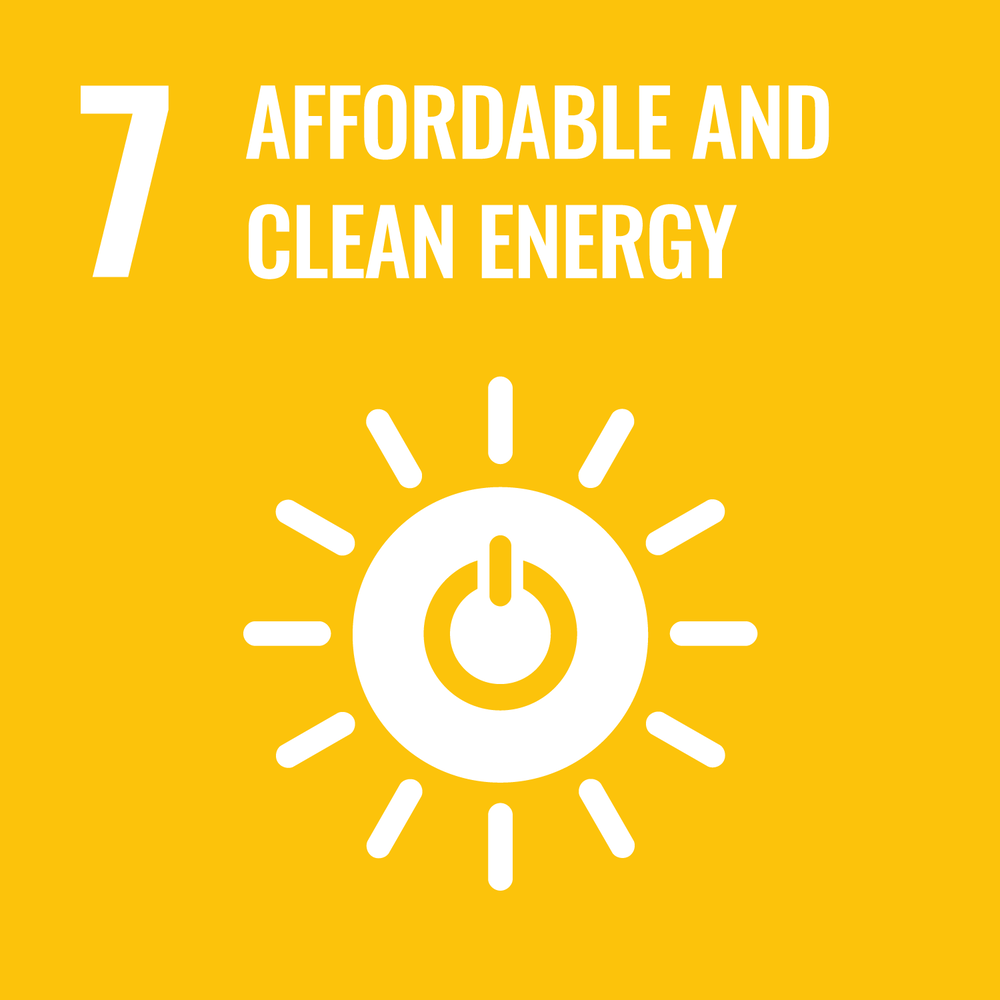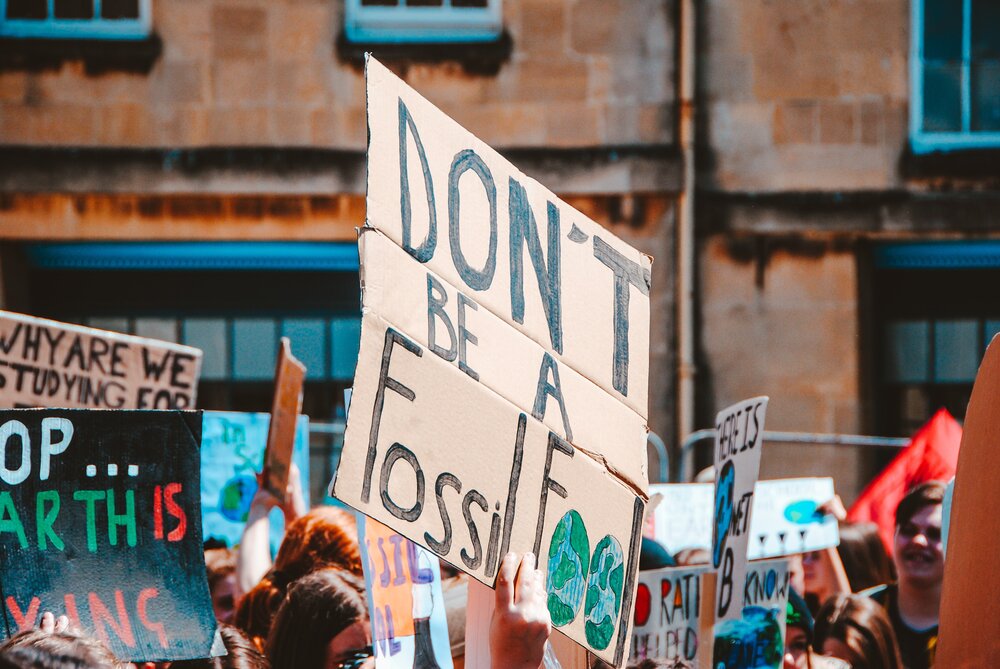This article is the tenth in a series delving into the links between the Sustainable Development Goals and Australia’s textile, clothing and footwear (TCF) industry. This article explores the role the TCF industry plays in achieving SDG 7: Ensure access to affordable, reliable, sustainable and modern energy for all…

Clean Energy & Fashion | The role the TCF industry plays in achieving SDG 7
WORDS | Julie Boulton & Aleasha McCallion, Monash Sustainable Development Institute
This article is the tenth in a series delving into the links between the Sustainable Development Goals and Australia’s textile, clothing and footwear (TCF) industry. This article explores the role the TCF industry plays in achieving SDG 7: Ensure access to affordable, reliable, sustainable and modern energy for all.
Earlier this year, at a time when we hadn’t yet heard of COVID-19 and we thought 2020 would be dominated by the continued impacts of the 2019-20 summer of bushfires, we wrote about SDG 13, Climate Action. In our article we noted the “enormous impact on carbon emissions by the [global TCF] industry.” and we provided some ideas on what Australian TCF businesses can do to respond to SDG 13.
There are complex inter linkages between all 17 SDGs (they were designed that way) and, as such, proposing solutions for one SDG will only ever be a partial response to a problem: complete solutions are ones that will bring in other SDGs. This is the case with Climate Action. Designing solutions for Climate Action, SDG 13, involves responding to SDG 7, the energy specific SDG. It’s a fairly clear link here - the types of energy that are used directly impact the amount of Greenhouse Gases (GHG) and that, in turn, directly impacts our climate.

SDG 7 is fairly straightforward, comprising 5 targets and 6 indicators. However, while the number of targets and indicators are relatively small, the expectations under SDG 7 are high.
ensured universal access to affordable, reliable and modern energy services (7.1);
increased substantially the share of renewable energy in the global energy mix (7.2)
doubled the global rate of improvement in energy efficiency (7.3);
enhanced international cooperation to facilitate access to clean energy research and technology, including renewable energy, energy efficiency and advanced and cleaner fossil-fuel technology, and promoted investment in energy infrastructure and clean energy technology (7.A); and
expanded infrastructure and upgraded technology for supplying modern and sustainable energy services for all in developing countries, in particular least developed countries, small island developing States and landlocked developing countries, in accordance with their respective programmes of support (7.B).
For this article, we are taking a close look at Target 7.2, which calls for a substantial increase in renewable energy as part of the global energy mix. Renewables include ‘forms of energy that their consumption does not deplete their availability in the future [such as] solar, wind, ocean, hydropower, [and] geothermal resource’.[1]

Target 7.2 is measured by assessing the share of renewable energy, in terms of the ‘total final energy consumption’ of the world (Indicator 7.2.1).
The current assessment is not positive. According to the United Nations 2020 Sustainable Development Goals Report, “The renewable energy share of total final energy consumption gradually increased, from 16.3 per cent in 2010 to 17.0 per cent in 2015 and 17.3 per cent in 2017.”[2] The report says that “much faster growth is required to meet long-term climate goals.”[3]
It is not a positive story for Australia either. While the share of renewable energy in Australia’s overall energy consumption has been increasing since 2000 it is at a very slow rate, (from 8.4% in 2000 to 9.6% in 2018/19[4]). Although, renewable energy share in electricity has more than doubled in the past 10 years, currently sitting at 19.8%[5] .
As renewable sources of energy have become increasingly available, there has been fairly widespread uptake by the sector to implement these options for direct operations such as head office and warehouse locations.
Environmentally conscious brand Allbirds have partnered with CleanPowerSF SuperGreen to provide 100 percent renewable energy ‘generated primarily from California-based wind and solar projects for its San-Francisco-based headquarters’.[6] Australia’s Elk, in their annual transparency report, note their goals under SDG 7 which include investing in renewable energy and purchasing green energy.[7]
In the retail space, Kathmandu has taken the lead by embracing solar power to reach net zero by 2025[8] and has not only three Green Star rated buildings but also has worked with the Green Building Council of Australia and embarked on a pilot program to develop a Green Star rating tool that all retailers could use[9]. Furthermore, ‘Kathmandu – have net zero by 2050 commitments for a significant proportion of their value chain emissions, and have [one of ] the most ambitious commitments of those assessed’ by ClimateWorks Australia [10].
But, this information only tells us part of the story. To measure the energy consumption outside of retail and operations the energy consumption data information has to be sought through other means. We turn back to SDG 13 and understand what the latest information is telling us regarding GHG emissions; the link being that using non-renewables sources of energy results in GHG emissions.

Images via Elk’s Transparency Report, More Here >>
McKinsey & Company (McKinsey), in partnership with Global Fashion Agenda (GFA) released a special report last month, “Fashion on Climate. How the Fashion Industry can urgently act on climate to reduce its greenhouse gas emissions” focused on fashion’s impact on GHG.
The report finds that in 2018 the TCF sector (globally) was responsible for approximately 2.1 billion metric tons of greenhouse-gas (GHG) emissions, around 4 percent of the global total. This means that the “...the fashion industry emits about the same quantity of GHGs per year as the entire economies of France, Germany, and the United Kingdom combined.”[11]
In terms of looking at where the fashion industry should focus its efforts to reduce GHG, the report helpfully breaks down the sources of the emissions and identifies that,
“More than 70% of the emissions come from upstream activities, particularly energy-intensive raw material production, preparation and processing. The remaining 30% are generated by downstream activities such as transport, packaging, retail operations, usage and end-of-use.”[11]
This statement brings us back to SDG 7 and shows just how interlinked the two SDGs are: to address the climate crisis the fashion industry needs to focus on delivering both energy efficiency and energy transition because, as McKinsey says “Some 63% of accelerated abatement potential lies in energy efficiency and the transition to cleaner energy sources.”[11]
In our SDG 13 article we proposed three steps that TCF businesses can take on Climate Action. These suggestions are also relevant for taking action on SDG 7 and, therefore, we are revisiting them here with extra emphasis on SDG 7.
○ Include emissions from your immediate operations and those from your supply chain AND include the source of electricity that is being used.
○ McKinsey states that around 60% of emissions savings are possible, mostly from the increased use of renewable energy in upstream operations.
○ Publicly commit to reducing carbon and to using renewable energy, including across the value chain.
○ McKinsey calls for the fashion industry worldwide to align with a 1.5 degree pathway over the next ten years.
○ Be transparent on both your commitments and your progress.
○ Consumers: search out businesses that are using or have committed to use 100% renewable energy.
○ Mckinsey notes that only around 50 fashion companies have committed to the science-based targets that are aligned with the Paris Climate Change agreement.

Two additional actions that have the potential to speed up progress on both SDG 13 and SDG 7 include,
Expecting individual businesses to secure renewable energy sources across their entire supply chain is a challenge but partnering with others can offer a pathway. Allbirds and Adidas, for example, have partnered to create a high performance shoe that is responsible for only two or three kilograms of CO2 emissions in contrast to the average 7.6 kilograms of CO2 used for an average pair of sneakers. Tim Brown, of Allbirds, describes this collaboration: “Whether we realise it or not this is a race that we are all running together as a planet and it is one that trumps the day-to-day competition of individual companies.”[12]
We echo McKinsey’s call for boldness and agree that now is not the time to be shy about how you really feel about saving the world. Now is the time to be active and ambitious. “Only by daring to change, collaborate and embrace new ways of operating can we, together, transform the industry and create prosperity for people and communities while working within planetary boundaries, protecting biodiversity and minimising the industry’s contribution to global warming.”[11]
The Paris Agreement calls for a global response to climate change by keeping “ a global temperature rise this century well below 2 degrees Celsius above pre-industrial levels and to pursue efforts to limit the temperature increase even further to 1.5 degrees Celsius.” [13]
Article 4 of the Agreement says that to achieve this goal, parties should aim to peak GHG as soon as possible and to undertake rapid reductions shortly thereafter.
There is a lot of work to do. “If no further action is taken over the next decade beyond measures already in place, the industry’s GHG emissions will likely rise to around 2.7 billion tonnes a year by 2030, reflecting an annual volume growth rate of 2.7%.”
Many in the industry are embracing the challenge, as can be seen with the Fashion Climate Charter where signatories commit, inter alia, to reduce GHG emissions and to “continuously pursue energy efficiency measures and renewable energy in our value chain.” Customers are also increasingly calling for a change. Earlier this year, a survey on customer expectations found that “two-thirds of surveyed consumers state that it has become even more important to limit impacts on climate change while 67% consider the use of sustainable materials to be an important purchasing factor.”[14]
Undoubtedly, there is momentum growing for further change to take place. By calling out good news stories and demonstrating what the pathways for action can be - in this case what the SDGs mean separately and together - we hope to support the sector in transitioning to a sustainable model - one that is better for people and the planet.
This article is thanks to Julie Boulton & Aleasha McCallion from Monash Sustainable Development Institute, Monash University. Stay tuned from more from this series as they delve into the SDG’s in detail over the coming months, and join the conversation on Twitter at @MonashMSDI

ClimateWorks Australia host webinar series: Clean technology: Energy and industry transitions
For the purposes of reporting against 7.2.1, the metadata says this about renewable energy: “A number of definitions of renewable energy exist; what they have in common is highlighting as renewable all forms of energy that their consumption does not deplete their availability in the future. These include solar, wind, ocean, hydropower, geothermal resources, and bioenergy (in the case of bioenergy, which can be depleted, sources of bioenergy can be replaced within a short to medium-term frame).” https://unstats.un.org/sdgs/metadata/files/Metadata-07-02-01.pdf
Ibid
IEA Australian Energy Balance and Electricity Tables
Australian Energy Statistics, Table O1
https://www.climateworksaustralia.org/resource/net-zero-momentum-tracker-retail-report/
https://unfccc.int/process-and-meetings/the-paris-agreement/the-paris-agreement
© 2024 AUSTRALIAN FASHION COUNCIL All Rights Reserved